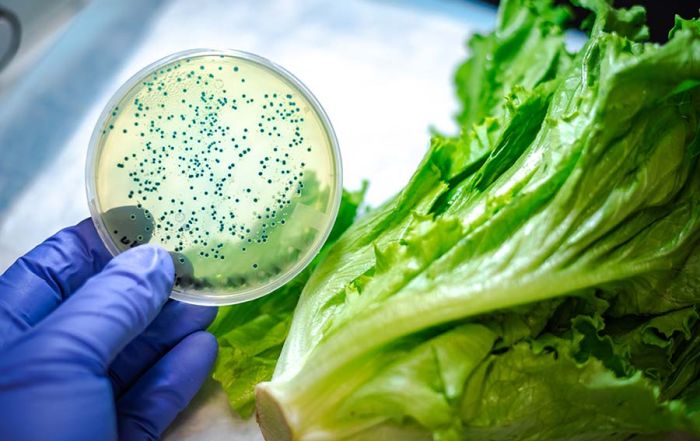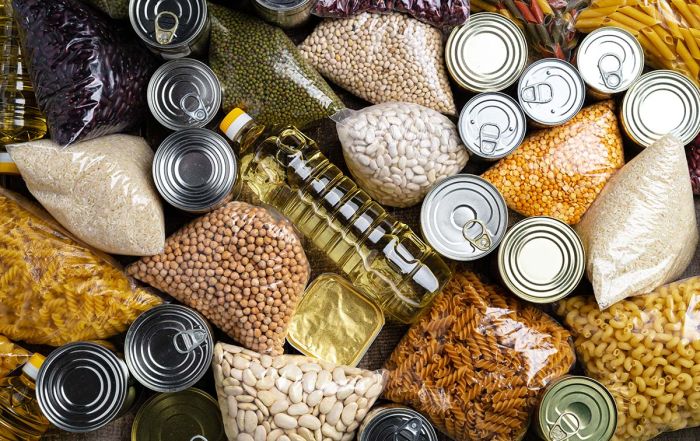Washing Produce – Food Code Style
With the increase in farm-to-school and farm-to-table programs in the last 10 years, my food safety colleagues and I are often asked about the safety of fresh produce. When I completed my first food safety class in college 20 years ago (ok, maybe a tad bit longer…), I don’t recall produce in any form being the focus of much discussion. Raw and ground beef? Yes. Undercooked pork? Absolutely. Sushi? You bet! However, fresh fruits and vegetables were not the focus of much conversation. In fact, many of you, like me, may have grown up eating fresh vegetables straight from the garden without a second thought.
However, when you start to look at the data related to actual foodborne illness outbreaks, it is understandable why the focus on produce has shifted over the years. Outbreaks associated with produce accounted for less than 1% of all outbreaks in the 1970s, increasing to over 6% in the 1990s, and almost 10% around 2015. During this time, not only did the number of produce-related outbreaks increase, so did the number of deaths associated with each outbreak and the geographic area that these outbreaks impacted, resulting in several multi-state outbreaks.
While some of the increase can be traced back to better surveillance methods, other potential reasons for the increase in produce-related outbreaks include the increased consumption of fruits and vegetables, the increased frequency that consumers dined away from home, the ability to ship product further from the original grower, the increasingly complex food distribution system (for more information about our complex food distribution system, check out the archived July SafeBites Webinar on Food Traceability), and the increased use of ready-prepared fresh-cut produce.
The cause of outbreaks have been traced back to many different sources. From irrigation source to the food handler in an upscale foodservice operation, mistakes made pre-harvest, during harvest, or post-harvest can have a profound impact on the safety and quality of food. Implicated in these outbreaks have been a wide variety of pathogens, including Cyclospora, S. enterica, Aeromonas spp., Bacillus cereus, Hepatitis A, E. coli., Listeria monocytogenes, Shigella spp., among several others.
Because of the mixed messages surrounding produce, along with the many sources of contamination and implicated pathogens, food handlers are often confused as to how to properly wash fresh produce. This is one of the most common questions we receive from food handlers.
Before commencing the washing process, it is important to note the food handlers should thoroughly wash their hands. Often, the food handler has just returned to the kitchen with the case of produce when they start the washing process, not fully appreciating they just contaminated their hands on the cooler door, the exterior of the box of produce they are carrying, or any number of surfaces between the cooler and their workspace.
In starting the cleaning process, remove any broken or bruised areas of the produce. Often, these broken or bruised areas, along with other cracks, scars, or cuts can harbor bacteria and allow the produce to internalize bacteria, which is often impossible to remove in the washing process.
Outbreaks associated with produce accounted for less than 1% of all outbreaks in the 1970s, increasing to almost 10% around 2015. With the many sources of contamination and implicated pathogens, food handlers are often confused as to how to properly wash fresh produce for service.
To further reduce the likelihood of the produce internalizing bacteria, wash using water that is 10°F warmer than the produce itself. Use running water and avoid soaking or submerging in the water; standing water only provides more opportunity for the produce to internalize bacteria and increases the chances of contaminating the water itself.
Use a vegetable brush on fruits and vegetables that can withstand the scrubbing. This includes cucumbers, potatoes, citrus fruits, cantaloupe, watermelon, beets, and carrots.
The decision to use a fruit and vegetable wash is ultimately up to the managers and employees of a foodservice operation. This decision includes many considerations, including cost of the wash and the pathogenic reduction you are able to realize by using the treatment. The Food Code does not mandate or endorse the use of any chemical to wash fruits and vegetables, only requiring potable running water. The FDA has gone as far as stating that there is no need to use a produce wash, and has further elaborated that the safety of the residues resulting from these washes have not been tested nor standardized. However, several studies, including one we completed at the Center for Food Safety in Child Nutrition Programs at Kansas State noted agitation and wash treatments, including vinegar reduced pathogenic load on the produce. Other studies have noted that water was just as effective and nearly all studies have failed to note if any reduction of pathogens actually reduced the pathogenic load below what would be required for infection, should someone consume the produce. It is important to note any chemical you decide to use should meet food code requirements (see 2017 Food Code, Section 7-204.12, p. 198), and you should use no more than recommended by the manufacturer.
As Dr. Strohbehn and I discussed last summer around this time in our blog, do not wash pre-cut lettuce and bagged salads if it is received “ready-to-eat”, “washed”, or triple washed”. If a microorganism survived the commercial washing process, it is extremely doubtful that you will reduce the microbial load to a safer level in the foodservice operation. In most cases, there is a greater risk of cross contamination during the washing process than if product was used straight from the bag.
As you think about your produce washing procedures and contemplating methods change the habits of your employees, plan to attend the next SafeBites Webinar on September 15, 2021 at 1:00 pm. We will have Dr. Kevin Sauer, professor of Food, Nutrition, Dietetics, and Health at Kansas State University and president of the Academy of Nutrition and Dietetics join us to discuss using stories to change behaviors of foodservice employees. In the meantime, feel free to reach out with any food safety questions you have, and we will research the answer and get back to you. Risk Nothing.
READ MORE POSTS
Enhancing Safety and Adding Flavor: The Role of Additives in your Food Supply
Last week, I ran across a post on Facebook from a childhood friend denouncing additives in [...]
E. Coli Outbreaks, The Gift that Keeps on Giving
Late in December, in response to possible E. coli contamination, we saw a recall issued for [...]
A Fresh Start: Recommitting Yourself and Your Business to Food Safety in 2024
As we get settled into the new year and leave the hustle and bustle of the [...]
Dry Food Storage – How Vital is it to Food Safety?
Whichever you decide, because some jurisdictions have more stringent requirements than the conference for food protection, check with your local health department to make sure they also recognize the exam before you pay for it.










